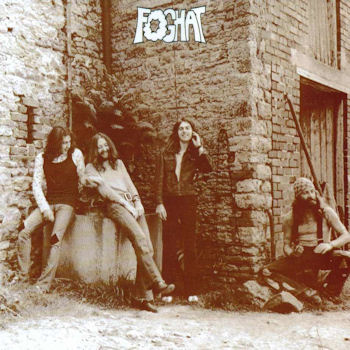Episode # 11 by Mike Mettler, official FoghatStorian 07-15-22
Hello one and all, and welcome everyone to the third part of our continuing series celebrating the 50th anniversary of Foghat’s self-titled debut studio album Foghat, which was released by Bearsville Records on July 1, 1972. (And recently reissued in Blue & Gold Vinyl by Friday Records – available at www.foghat.biz)
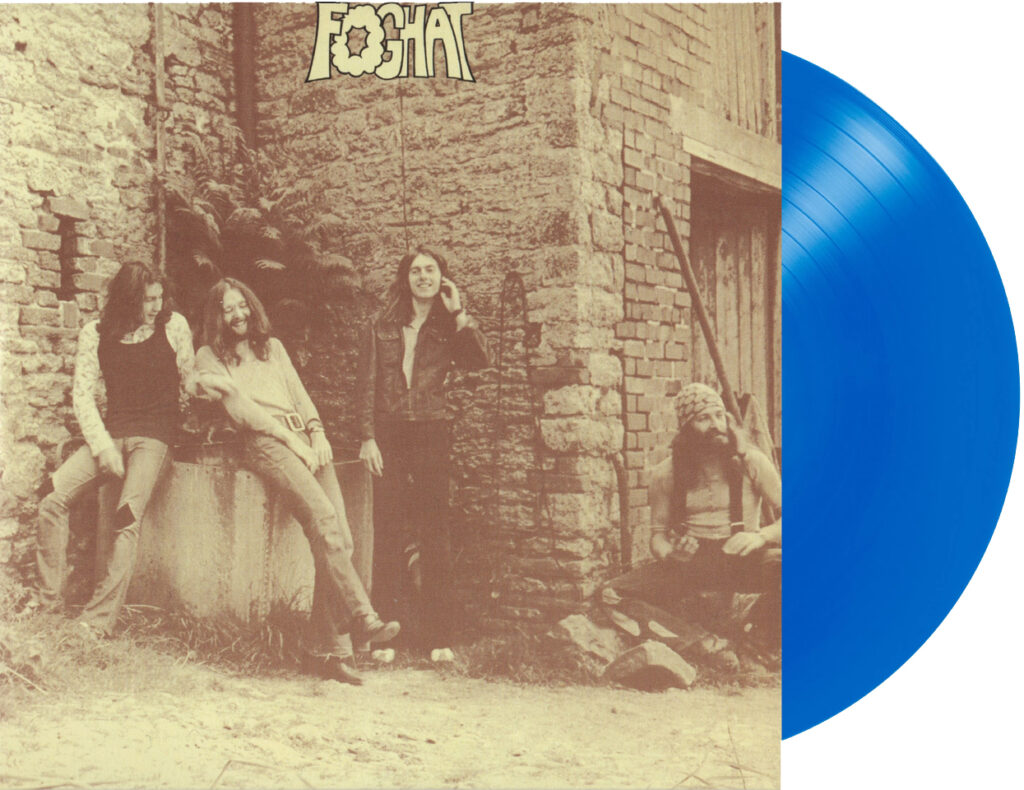 As recounted in our previous two FoghatStory installments, Foghat was produced by Dave Edmunds (Love Sculpture, Rockpile), and the album’s truly galvanizing 38 minutes of blues-drenched rock set the tone for a band that continues to ply the planks to this very day. In Part II of this series, which posted here on July 8, founding drummer Roger Earl recounted the making of the album’s barnburning opening track, “I Just Want to Make Love to You,” and he also shared how blues legend Willie Dixon, who wrote the song, gave Foghat his firsthand seal of approval when he joined the band onstage in Chicago in 1978.
As recounted in our previous two FoghatStory installments, Foghat was produced by Dave Edmunds (Love Sculpture, Rockpile), and the album’s truly galvanizing 38 minutes of blues-drenched rock set the tone for a band that continues to ply the planks to this very day. In Part II of this series, which posted here on July 8, founding drummer Roger Earl recounted the making of the album’s barnburning opening track, “I Just Want to Make Love to You,” and he also shared how blues legend Willie Dixon, who wrote the song, gave Foghat his firsthand seal of approval when he joined the band onstage in Chicago in 1978.
Here in Part III, Roger and I continue our deep-dive conversation about Foghat, this time centering on the song that immediately followed “Love” in the running order, “Trouble, Trouble,” along with a few others, plus Roger details the key contributions to the album by a pair of Bearsville recording engineers who went on to bigger and better things — namely, Todd Rundgren and Nick Jameson. And time goes 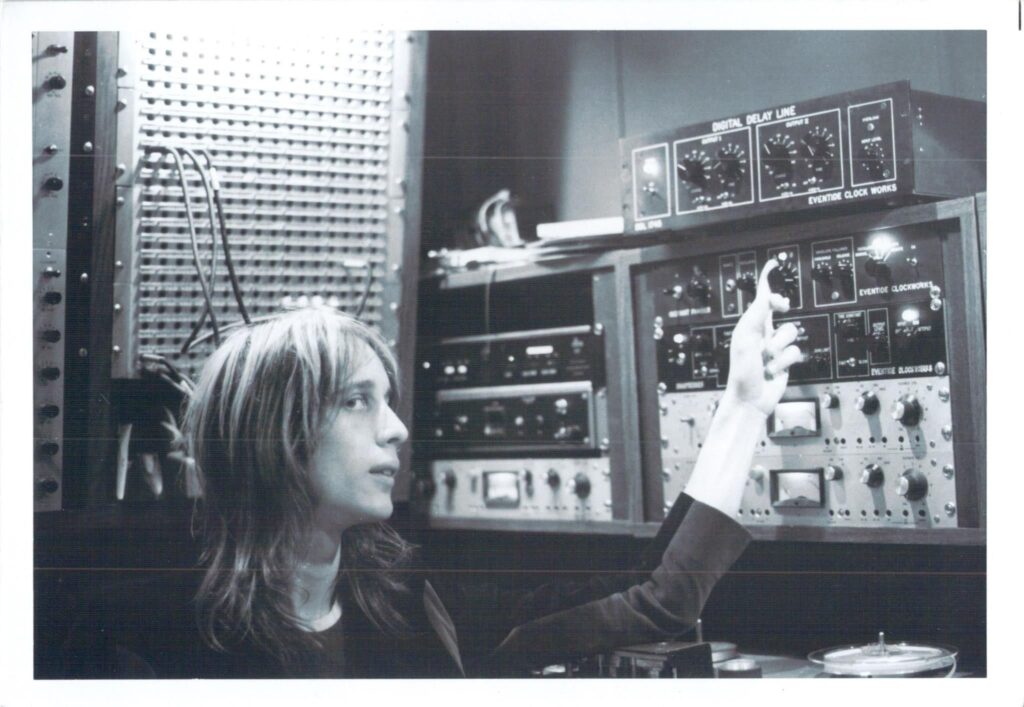 on, to another day / This time tomorrow, I’ll be so far away. . .
on, to another day / This time tomorrow, I’ll be so far away. . .
Mike Mettler: Now that we’re done talking up “I Just Want to Make Love to You,” let’s get into some of the other songs on Side 1 of Foghat. Track 2 is Lonesome Dave’s “Trouble, Trouble,” which has a guest piano player on it by the name of Todd Rundgren.
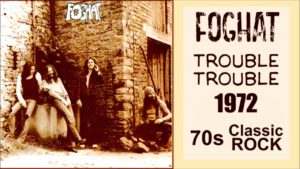
Roger Earl: Yes, I think so. That one wasn’t recorded in Rockfield, Wales [the studio where the balance of Foghat was recorded] — that was recorded at AIR Studios in London, and Todd Rundgren engineered and produced it. I believe he played piano on it too. He may have played a rhythm guitar on it as well, but I can’t be sure. Both lead guitars are by Rod [Price] and Dave [Peverett], who take turns.
 As I said, I think Todd might have even played guitar on it, but he did play the piano on it. I also think it was Todd’s mix that we used for that one. I don’t know that he got credit for it, but he probably got the money! (MM laughs)
As I said, I think Todd might have even played guitar on it, but he did play the piano on it. I also think it was Todd’s mix that we used for that one. I don’t know that he got credit for it, but he probably got the money! (MM laughs)
Actually, I saw Todd last year at the Moondance Jam [in Walker, Minnesota on July 23, 2021]. I hadn’t seen him since probably 1974, so it was really cool to reconnect. He and his band were fantastic. They played so tight, and they were really, really good! It was great to see Todd again. What a great talent.
I really enjoyed working with Todd. Besides Foghat, we worked with Todd on some songs on our second album [March 1973’s Rock ’n’ Roll]. He helped on the arrangements, and he’s also a really good drummer.
[MM notes: You can read all about the making of Rock ’n’ Roll in FoghatStory #5, which posted here back on March 17, 2022.]
Earl: Anyway, we worked on a couple of different things on Foghat with Todd. I think he also had something to do with “Sarah Lee” [the last track on Side 1].
Mettler: That sounds about right to me. I think Todd had also been working on his Something/Anything? double album around the same time as Foghat, though his album came out first.
 Earl: Yes, I think that one had already come out when we met. [Something/Anything? was released on Bearsville Records in February 1972, almost five months ahead of Foghat.] I remember our manager at the time, Tony Outeda, was a huge fan of Todd’s, so, of course, we got to listen to Something/Anything? on the early side — great stuff! I think Todd played just about everything on there as well.
Earl: Yes, I think that one had already come out when we met. [Something/Anything? was released on Bearsville Records in February 1972, almost five months ahead of Foghat.] I remember our manager at the time, Tony Outeda, was a huge fan of Todd’s, so, of course, we got to listen to Something/Anything? on the early side — great stuff! I think Todd played just about everything on there as well.
Mettler: Yeah, that album was pretty much a one-man special. [Rundgren sings and plays all the instruments himself on the first three sides of Something/Anything?, and then he had a number of musicians join him in a few different studios for the live sessions heard on Side 4.]
Earl: This was also the first time we’d worked with Nick Jameson, who eventually became the engineer at Bearsville Records after Todd went off to become a star. We hadn’t really met Nick yet when we were doing the Foghat record, but there was this song at the end of the album, “Gotta Get to Know You.”
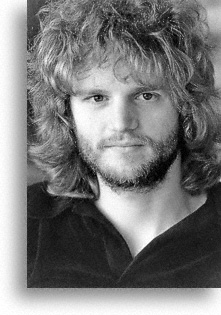 Mettler: Right, that’s the track where Nick is doing all that cool Mellotron stuff.
Mettler: Right, that’s the track where Nick is doing all that cool Mellotron stuff.
Earl: Yes. Dave Edmunds had mixed it — and I don’t remember exactly why, but there was something missing from it. Tony Outeda took it back to Bearsville, and Nick put Mellotron on it. That was our first introduction to Nick, and it’s been a long and fruitful friendship. I’m still really tight with Nick. He lives in Iceland now — in Reykjavik.
Mettler: Oh, that’s right — Nick the famous actor, as he’s also known. He’s an amazing talent.
[MM notes: As an actor, Nick Jameson is perhaps best known for portraying Russian president Yuri Suvarov for three seasons on the Kiefer Sutherland thriller 24. In the Foghat universe, Nick produced a good number of the band’s albums over the years, starting with October 1974’s Rock and Roll Outlaws. He also played bass and other instruments as a fulltime bandmember during two separate stints with Foghat — 1975-76, and 1982-83.]
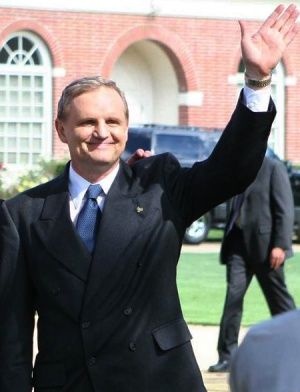
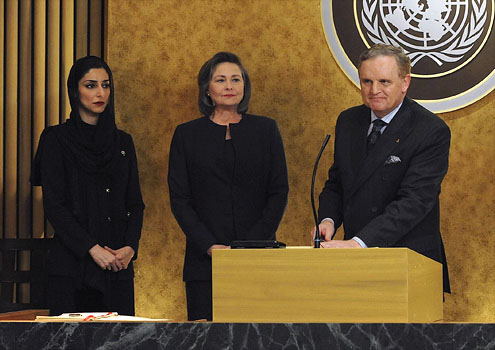 Earl: Nick’s one of the most talented and funny people I know. I’ve said this before, but out of everybody I’ve worked with and known, I’ve learned more about playing, about music, and about the feel and the approach to playing music thanks to Nick than probably anybody.
Earl: Nick’s one of the most talented and funny people I know. I’ve said this before, but out of everybody I’ve worked with and known, I’ve learned more about playing, about music, and about the feel and the approach to playing music thanks to Nick than probably anybody.
I remember when Nick was producing [October 1982’s] In the Mood for Something Rude. We’d been rehearsing at my house and at the studio, and we did one take on this one particular song. After we were done, Nick said, “That’s great.” I get off the drums, and our manager Tony Outeda was there and he said, “Well, hold on a second. You don’t even wanna do it again? And Nick said, “Why? It’s working. Let’s do something else.” (both laugh)
That was one of the beauties of working with Nick. He could make up his mind if something was working. Rod, being the artist he was, would often not be entirely happy with how he played the guitar. Nick would say, “Well, I thought it was great!” And then Rod would say, “No, I wanna play it again.” But if Nick really liked something Rod had done, he’d keep it. And then Rod would play it again and Nick would say, “Well, come in [the control room] and have a listen.” And then he would play both guitar solos for Rod, and Rod would go, “Nah, I don’t like that. I like the beginning of this, and the end of that. We’ll use the beginning of this tape and the end of that tape, and we’ll put them together.” And Nick would say, “Ok.”
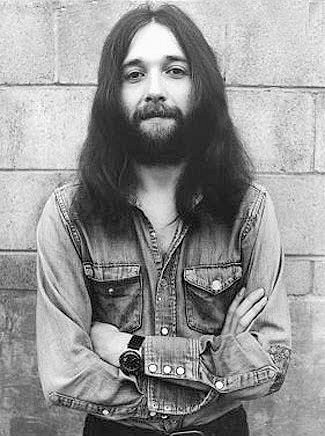 Mettler: A good working relationship, then. Is it fair to say the arrangement of “Gotta Get to Know You,” which runs almost eight minutes long at the end of the Foghat album, was due in part to Nick’s involvement? Did he transform it because of the stuff that he added in, like the Mellotron part?
Mettler: A good working relationship, then. Is it fair to say the arrangement of “Gotta Get to Know You,” which runs almost eight minutes long at the end of the Foghat album, was due in part to Nick’s involvement? Did he transform it because of the stuff that he added in, like the Mellotron part?
Earl: Yeah, definitely. Like I said before, this band’s been known to carry on with a song when most other bands would stop at three minutes. Why stop at three minutes when you’re having fun? Let’s make it six! (chuckles) But record companies are always like (adopts lower vocal tone), “No, no. Can we have a single? A single can’t be more than three-and-a-half minutes.” Umm. . . no! (laughs)
Nick’s involvement on “Gotta Get to Know You” was something else. In fact, maybe we should start doing that song live.
Mettler: Oh, I’d love to hear you do that! It would be a very interesting song to revisit because it’s very subtle in how it builds up after it fades in. I love the layering on it — how the Mellotron is very buried to start with, and then it comes to the front. You have to listen for it carefully before you realize it’s coming in, and then it moves to the front of the track. You guys play out the entire song in a very smartly arranged way.
Earl: It’s just a really cool track, isn’t it? I mean, “I just gotta get to know you.” It’s a love song — and we’re not noted for too many ballads! There’s a really cool groove and vibe about the song when we were doing it. I think the Mellotron, and the way Nick mixed it and what he put on it, made it work. Sometimes you need a helping hand. You need somebody else to hear it, and to provide the glue that makes it come together.
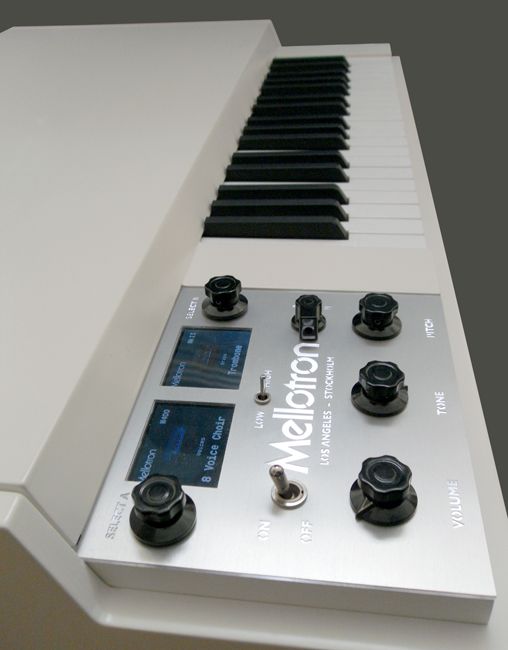 But nearly always, and certainly on this record, we all played together and sang together. Whether we redid the vocals — which sometimes happened, and sometimes didn’t — the band always played together. That’s the groove that keeps you together.
But nearly always, and certainly on this record, we all played together and sang together. Whether we redid the vocals — which sometimes happened, and sometimes didn’t — the band always played together. That’s the groove that keeps you together.
Mettler: And that’s part of the magic of this specific Foghat record, I think. Most people knew three of you guys came from the Savoy Brown universe, and we can hear that transition from the last record you did with Savoy, [October 1970’s] Looking In, to this one. Foghat is the footprint for a band that clearly knows how to play together on a record the right way — and also be able to do it all live too. You guys seem to have been able to capture that special magic on the wax here.
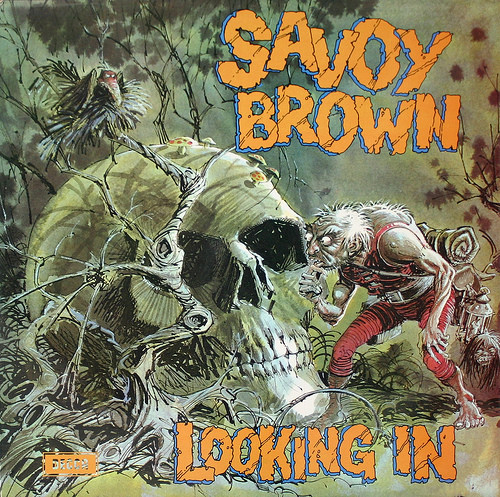
Earl: Well, thank you! Yeah, we tried — but there was also that “youthful enthusiasm” we had onstage too, you know. (chuckles)
Mettler: That’s true! Ok, let’s get back to the album’s running order, since we kind of skipped ahead to the end for a minute there. The next song after “Trouble, Trouble” on Side 1 is “Leavin’ Again (Again).” Good ol’ Lonesome Dave, living up to his name yet again on that one, again! (laughs)
Earl: Yeah, yeah. Great track. [Bassist] Tony Stevens originally wrote the song with Dave. [As alluded to earlier, Tony, Dave, and Roger were all members of Savoy Brown together prior to forming Foghat with Rod Price as the final, vital piece.]
Mettler: “Leavin’ Again (Again)” has a definite Dave Edmunds feel to it, I think. This one almost sounds like it could have been a Rockpile-era Edmunds track, with the vibe and the tone that’s going on in it.
Earl: And it’s about something we all have to go through. Like (sings), “I’m leavin’ again / Help me pack my case / I’ll be a long time / In another place / I’m working for something / It ain’t no lie.” That seems to run through a lot of Foghat tunes, doesn’t it? “I’m leaving. I’m coming back. I’m going off to travel again.”
 Mettler: Yes! We talked about that very idea when we went over the Rock ’n’ Roll album a few months ago. There was a lot of train imagery on that record, for one thing. And like you were saying, it was basically about, “I’m going away. I’m with you now, but then I’m not with you later. Now I’m missing you,” and all that. But that was your life at the time because that’s exactly what you guys were doing! You were experiencing that as artists, and as people, at the same time.
Mettler: Yes! We talked about that very idea when we went over the Rock ’n’ Roll album a few months ago. There was a lot of train imagery on that record, for one thing. And like you were saying, it was basically about, “I’m going away. I’m with you now, but then I’m not with you later. Now I’m missing you,” and all that. But that was your life at the time because that’s exactly what you guys were doing! You were experiencing that as artists, and as people, at the same time.
Earl: You know, maybe we should play that song live too. As soon as we take a break, we’re gonna get back down to the studio [in Florida]. Maybe if I start suggesting songs like this one to do, the band will learn it — and then, all of a sudden, we’ll be playing it! But then it’ll become a two-and-a-half-hour show, and I dunno if I wanna do that! (laughs heartily)
To be continued. . .
The story of Foghat’s July 1972 debut album is just too darn big for one FoghatStory let alone three of them, so please come back next week for Part IV, wherein Roger Earl takes us through “Fool’s Hall of Fame,” “Sarah Lee,” and much more! See you then!!
[end]

